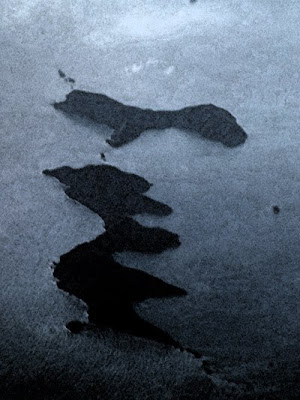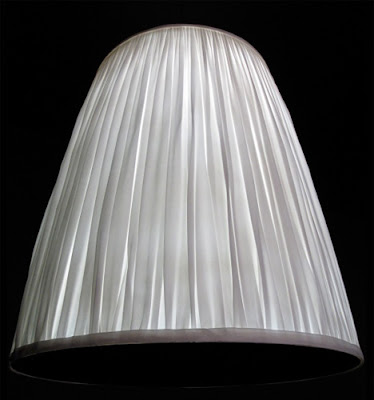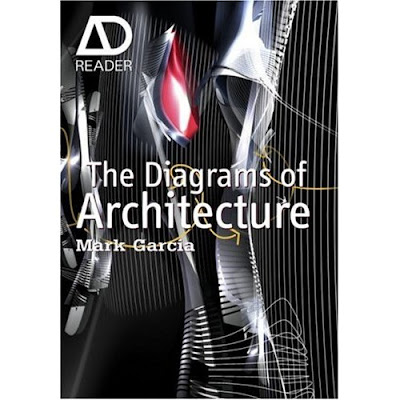
Sunday, August 1, 2010
Silence and Wonder

Tuesday, July 13, 2010
Sans Image
Tony Bennett, Lawrence Grossberg, Meaghan Morris, Raymond Williams (2005) New keywords: a revised vocabulary of culture and society
Saturday, July 3, 2010
Thursday, June 17, 2010
Tuesday, June 15, 2010
Thursday, June 3, 2010
New Eyes
Thursday, May 13, 2010
Monday, May 3, 2010
Space and Time
 Pinhole photograph, JB
Pinhole photograph, JBThe minutest incidents of childhood, or forgotten scenes of later years, were often revived. Of this, at least, I feel assured, that there is no such thing as forgetting possible to the mind. A thousand accidents may and will interpose a veil between our present consciousness and the secret inscriptions of the mind; accidents of the same sort will also rend away this veil; but alike, whether veiled or unveiled, the inscription remains for ever; just as the stars seem to withdraw before the common light of day, whereas, in fact, we all know that it is the light which is drawn over them as a veil, and that they are but waiting to be revealed when the obscuring daylight shall have withdrawn.
 Pinhole photographs - superimposed, JB
Pinhole photographs - superimposed, JB
Marlborough Sounds, JB
Text: Thomas de Quincey (1821) Confessions of an English Opium-Eater
Thursday, April 29, 2010
Tuesday, March 30, 2010
Mourning News
 Adam Farlie, Mourning Light
Adam Farlie, Mourning Light
Adam Farlie, Mourning Light
Friday, March 19, 2010
The X-ray
 Guido Reni (17th century), St Sebastian, X-ray carried out as part of conservation by the Auckland City Art Gallery, NZ
Guido Reni (17th century), St Sebastian, X-ray carried out as part of conservation by the Auckland City Art Gallery, NZ
Guido Reni (17th century), St Sebastian, Oil on canvas
Saturday, March 6, 2010
Dark Times
Yes, there will be singing.
About the dark times.
Bertolt Brecht, Motto
Tomasz Bednarczyk, I see you
Thursday, February 25, 2010
Memory Mirrors
Like a death mask, Andy Lock's images of Orchard Park persist as impressions of something now gone. Before the building was demolished Lock photographed the abandoned apartments, the images gaining a metaphysical haunting with his alchemical photo processing. Taking the images as slides, Lock projected them onto a wall painted with glow-in-the-dark paint, and then photographed the after-glow, the after-image that appeared on the wall.
Like an apparition summoned to a séance the photographs appear unearthly. The green of the glow in the dark paint is at once nostalgic and toxic. The phosphorescence is is reminiscent of a Christmas decoration I have which is generations old, and glows in the dark. This magical quality always seemed very sinister, as, so family mythology had it, the glowing surface was radioactive.

If photography is, as Oliver Wendell Holmes wrote in the 1850s, "the mirror with a memory", then perhaps it is a mere skip from the specular to the spectral, of haunted reflections, the after-images of the after-life ....
Saturday, February 13, 2010
Island Dreaming
Video by Melinda Hunt
In the Western tradition, islands have always been associated with becoming rather than being, thresholds to other worlds, way stations rather than home places.
John Gillis
Tuesday, February 9, 2010
The Museum of Innocence
"The museum is not an illustration of the novel and the novel is not an explanation of the museum. They are two representations of one single story perhaps." To build a real museum of a fictional event is to enter the möbius strip of reality, surreality, superfiction. Orhan Pamuk's The Museum of Innocence, 2009, is both a novel and an actual project, a museum to be established in Çukurcuma, an area in Istanbul. Exhibited in the museum will be items related to the novel, and within the pages of the book is a map and a ticket to the museum.
Like another museal superfiction, The Museum of Contemporary Ideas, the imbricated loops and links, shuttling between a real city and an imagined story, set up a parallel existence, one which is never wholly realisable. Peter Hill's Museum of Contemporary Ideas, 1989, was the birthplace of 'superfiction,' the use of visual and textual language of official institutions to frame invented, fictional institutions, events, or people. Hill’s Art Fair Murders was both a novel and an installation that interwove fact and fiction.
Or even the recent tale of real-life French intellectual Bernard-Henri Lévy who unwittingly cited a fictitious philosopher in his latest book, De la Guerre en Philosophie. In the book Lévy quotes Jean-Baptiste Botul, a faux philosopher invented by Frederic Pages. Although perceived as a major error on Lévy's part - even a quick search on the internet will reveal the nature of Botul's existence, and his particular strand of philosophy known as Botulism - perhaps, just maybe, it is an intricate work of superfiction... Like Pamuk's creation of a real museum for a fictional story, of Hill's elaborate interweaving of life and art, citing an imaginary theorist might elevate mere philosophy to a work of art...
(Image above from Açalya Allmer (2009) Orhan Pamuk's 'Museum of Innocence': on architecture, narrative and the art of collecting . Arq : Architectural Research Quarterly, 13(2))
Thursday, February 4, 2010
Diagrams ... out now

Beyond the Scene

beyond the scene
Landscape and Identity in Aotearoa New Zealand
Co-editors Janet Stephenson, Mick Abbott, Jacinta Ruru
Well-known writers, from a range of disciplines, explore the many meanings of landscape...
If a nation could be said to have a dominant passion, New Zealand’s would be its landscapes. Images of spectacular natural features pervade the media – between the pages of glossy coffee-table books, in tourism promotions and on screen as the setting for blockbuster movies - but are these scenes that define its people?
For Beyond the Scene the editors asked eleven writers to choose a landscape that was important to them and to write about it from the perspective of their life experience and knowledge. From farmer to art historian and film critic, geographer and planner to lawyer, from landscape architect to poet and environmentalist – these are diverse voices. Each discusses a very different landscape: from suburban Auckland and rural Waikato to a planned town in Canterbury and much-filmed Otago. Together they investigate the relationship landscape has to identity, community and psyche.
Contents
Foreword Diane Menzies
1 Entering Landscape Janet Stephenson, Jacinta Ruru and Mick Abbott
2 Land, Sea and Sky in Taranaki Maori Songs of Lament Ailsa Smith
3 Of Rocks and Recollections: Our home in the South Waikato Gordon Stephenson
4 Waitaha – A Canterbury poem sequence David Eggleton
5 Eternal Sunshine: The search for spotless landscapes Jacky Bowring
6 Otara and Dannemora: Contrasting landscape and ethnic identities in two South Auckland suburbs Wardlow Friesen and Robin Kearns
7 Films, National Identity and the Otago Landscape Davinia Thornley
8 Outside the Frame: Depicting Auckland's urban landscape Linda Tyler
9 A Cloaked Landscape: Legal devices in Mount Aspiring National Park Jacinta Ruru
10 Patina: People and place in Akaroa Janet Stephenson
11 Travelleing Landscapes: Ngai Tahu rock and and Ngai Tahu identity Lyn Carter
12 A Future with Our Past: Toward a creative practice of heritage in the Coastal Otago
landscape Mick Abbott
13 Landscape’s Generosity Janet Stephenson, Jacinta Ruru and Mick Abbott
beyond the scene
Landscape and Identity in Aotearoa New Zealand
Co-editors Janet Stephenson, Mick Abbott, Jacinta Ruru
Environmental studies, Planning, Geography, Cultural Studies
240 x 170mm, 224 pp, ISBN 978 1 877372 81 0, $45.00
Otago University Press
email: booksales@otago.ac.nz.
www.otago.ac.nz/press
Wednesday, February 3, 2010
Killing Time
 London, 2006, JB
London, 2006, JBThursday, January 28, 2010
The Pathology of Melancholy
Thomas Feiner and Anywhen, Dinah and the Beautiful Blue
Depression and death are black holes for melancholy. Their gravitational force is such that they claim melancholy almost wholly, leaving only small particles available for the remainder of the pathology of the self. For the un-nameable malaise of a Friday afternoon in summer, contemplating the passage of another of one's years, another circling, an ascent, a descent, the perfect annual spiral. And there are particles available for the particular state of mind brought on by the return from voyages, where the space of domestic life seems so poignant, a distant friend. And, too, for that which is most elegant in Latin, Post coitum omne animal triste ... if not la petite mort, then la petite post mortum.
The Little Death and the Beautiful Blue claim particles of melancholy, along with the sound one hears across the valley, a cliché perhaps that it is a church bell, and even one shrouded in the mist of a summer's morn, yet it causes a pathological affect in the small channel that connects the inner ear into the brain's most contemplative chambers, flooding them momentarily in the fugitive fluids which are the carriers for the fleeting pain of poignancy. The Physician's Guide to the Pathology of Melancholy is a slim, yet dense volume, largely considered an addendum to the weighty tomes on Death and Depression. It is seen by some as a hymnal, a litany of lyrical effects. And by others a wish list, an itinerary, a gazetteer, a route through a certain map of the human heart and mind.
Sunday, January 10, 2010
Limning


The prospect of a page and a pencil is laden with anticipation. Revelations. Imaginings. Inventions. Against the slick rendering of computer generated imagery is the humility of drawing, the humanism of representation. Almost as though unmediated, like automatic writing, the eye feeds the hand.
 Peter Greenaway, still from The Draughtsman's Contract
Peter Greenaway, still from The Draughtsman's Contract
(Mr Neville making the drawing - the actual drawing by Greenaway himself)
Friday, January 8, 2010
Contemplation of the Sublime
Confrontation, contemplation, the yielding of one's self to what is beheld. An alarming, piercing reality. A sense of suspension. The vertiginous falling into the world. The trance-like experience of immersion, submersion. Solitude, tranquility, isolation. Many of the actors in Werner Herzog's Heart of Glass performed under hypnosis, amplifying the oneiric atmosphere. The hallucinatory lucidity that lies slightly askance of the quotidian. How many degrees must one move to enter this realm, the everyday surreal sublime? What must shift for things to enter the pleasing unease? To allow one's self to suddenly fall, tumbling through the pane into the otherworldly realm that lies nearby, or within.
"Strange! So infinitesimally narrow is the threshold between the two realms, and yet no one raises their foot to cross it! The other reality borders on our skin, yet we do not feel it! Our imagination stops here, where it could create new land."
Gustav Meyrink, The White Dominican, 1921
Wednesday, January 6, 2010
A New Year State of Mind
Straying through a world of pages, words, lost, loving being lost. Journeys of the mind this year. Faraway ... so close. A journey through the most utilitarian of places becomes a mystical ascension. The car park building is arranged around a perfect spiral, on the pretext of searching for a park one loops, ascends, up the line of grace, a helix built around the wonder of centrifugal force, the phenomenological ecstasy of driving, up, up, 8 floors, 9 floors, 10 floors, on ... 15 floors, then ... sky ... vast celestial dome of blue, and an expanse of open desert-like space. Vacant and tranquil. Transported within the city, to another world within. Scratch the surface and the city is surreal.






